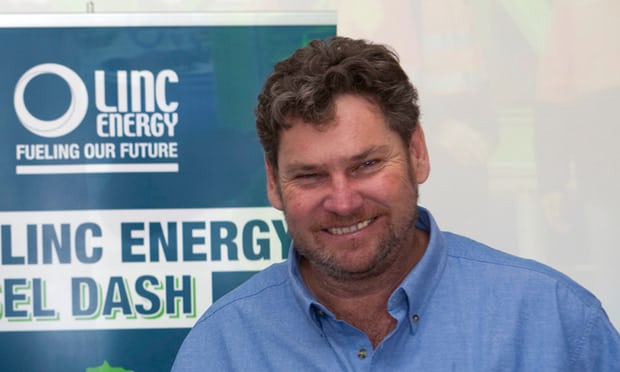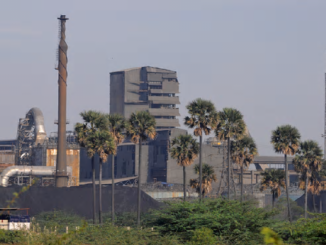
The failed Queensland energy company Linc Energy has been slapped with one of the state’s largest environmental fines and ordered to pay $4.5m for contaminating farmland in the state’s western downs.
Judge Michael Shanahan said the company’s actions amounted to “ecological vandalism”.
But questions remain about whether the company’s liquidators, who pleaded not guilty but chose not to mount a defence in the Brisbane district court, can be forced to pay the fine and an estimated $72m cleanup bill.
The prosecution of the company and several ongoing cases involving Linc are considered a key test of the Queensland government’s ability to hold polluting mining companies to account for criminal actions and their toxic legacy.
Linc was found guilty of five counts of causing serious environmental harm by polluting farmland near Chinchilla with hazardous contaminants despite warnings from scientists. The former Queensland environment minister Stephen Miles described the contamination as “the biggest pollution event probably in Queensland’s history”.
The court heard that Linc operated four underground coal gasification (UCG) sites in Chinchilla, where it burned coal underground at extreme temperatures to create gas.
Workers were told not to drink onsite tank water and advised to drink milk and eat yoghurt to protect their stomach from acid. Its operations ultimately left water polluted to the point that it was unfit for livestock.
Scientists and workers warned about gases bubbling from the ground but the company kept operating.
The trial heard that the company’s former chief executive officer, Peter Bond, “prioritised Linc’s commercial interests over the requirements of operating its mining activity in an environmentally safe manner”.
A separate case has effectively tested whether the liquidators are liable for the cost of the environmental cleanup. Liquidators were ruled last year to be responsible for the site but in March, the Queensland supreme court overturned that order. The state government has signalled its intention to take the case to the high court.
Bond told News Corp in April that the district court case “means nothing” because of the supreme court ruling and the company would probably not have to pay any fine. No defence was offered by the liquidators in the district court case. Bond said: “There was no one in court to call bullshit and there was a lot of bullshit to that case.”
The Queensland Environmental Defender’s Office has said criminal and civil cases involving Linc and former executives “may have wide-reaching impacts for how companies and directors will be held to account for environmental damage, and mining operations”.
Five former Linc executives also face charges related to the operation of the UCG site and will face a committal hearing in the Brisbane magistrates court later this year.
The law firm Slater and Gordon is investigating a potential class action representing agricultural landholders in an area up to 320 sq km around the Linc site.
A Bundaberg-based firm, Marland Law, is leading a class action from landowners against the Queensland government in relation to its approval and monitoring of the project.
The government has budgeted $20m for the next four years for the cleanup of the site. But the supreme court heard previously the true cost is likely to be $78m and could take up to 30 years.
In some cases where UCG has caused contamination, such as the Hoe Creek site in Wyoming, extensive subsidence occurred 15 years after the site was decommissioned.
Visits: 148




The money should be used on environment improving.